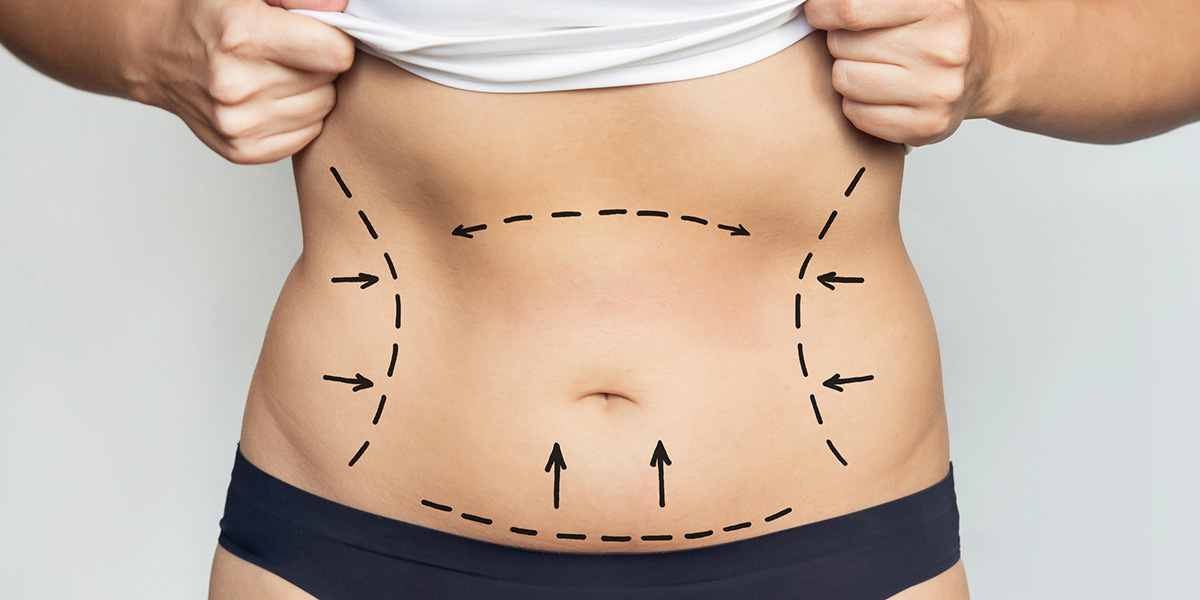A body lift after weight loss is a surgical solution for individuals who have experienced significant weight reduction but are left with loose, sagging skin. While the health benefits of weight loss are undeniable, the physical aftereffects can be uncomfortable and discouraging.
Many people find that the excess skin does not respond to diet or exercise. In some cases, it causes hygiene issues, restricted movement, and decreased confidence. A body lift helps complete the transformation by tightening and reshaping key areas of the body.
What Is a Body Lift?
A body lift is a comprehensive plastic surgery procedure designed to remove excess skin and small fat deposits, typically from the abdomen, buttocks, hips, thighs, and lower back.
It addresses the deflated or draped appearance that results when skin loses its elasticity and cannot conform to a person’s new, smaller frame. The surgery involves excising the redundant tissue and lifting the remaining skin to create a smoother, more toned silhouette.
Unlike a standard tummy tuck, which focuses solely on the abdominal area, a body lift targets multiple regions at once. The procedure is tailored to each patient’s needs, depending on the amount and distribution of skin laxity.
Why Patients Consider a Body Lift After Major Weight Loss
Major weight loss, particularly 80 pounds or more, often leaves the body with stretched, loose skin that does not retract. This extra skin is more than a cosmetic concern.
Many patients experience irritation, rashes, or infections where skin rubs together, such as in the groin, abdomen, or inner thighs. Others struggle to wear fitted clothing despite reaching a healthy weight.
The presence of sagging skin can also impact emotional well-being. Many patients feel self-conscious in social settings, avoid places like gyms or beaches, and hesitate to participate in physical activities. A body lift after weight loss refines the body’s contours and restores confidence by addressing these issues.
Types of Body Lift Procedures
Lower Body Lift
A lower body lift targets the abdomen, flanks, buttocks, and outer thighs. It removes excess skin and tightens tissues to reshape the midsection and lower torso. This option is best for individuals with significant loose skin that does not respond to exercise.
Upper Body Lift
The upper body lift is designed to address excess skin and fatty tissue in the upper back, chest, and lateral breast area. Often combined with procedures like bra line back lift or arm contouring, this surgery enhances the upper torso’s overall contour.
Ideal candidates are those with noticeable skin folds on the back or chest after major weight loss, particularly those whose weight loss has affected their upper body more prominently.
Medial Thigh Lift
A medial thigh lift focuses on the inner thighs, where loose skin frequently accumulates after weight loss. This procedure reshapes the thigh area by removing excess skin and improving tone and definition.
It’s best suited for patients who are close to their goal weight but struggle with persistent inner thigh sagging. This might lead to discomfort or chafing when walking.
Buttock Lift
A buttock lift removes sagging skin and repositions soft tissue to enhance the buttocks’ shape and projection. It is often performed in conjunction with a lower body lift or fat grafting procedures. Ideal candidates are individuals who experience deflated or flattened buttocks following weight loss and wish to restore a firmer and more youthful appearance.
Circumferential Body Lift
This is the most extensive form of body lift, combining the lower body lift with posterior (back) contouring to address the entire midsection in a 360-degree approach. It targets the abdomen, hips, thighs, and back simultaneously. The best candidates are those with dramatic weight loss outcomes, often over 100 pounds, who have developed substantial skin laxity around the entire waistline.
What to Expect During Surgery
Before the procedure, patients undergo a complete consultation and pre-surgical evaluation. This includes medical history, physical examination, and imaging if necessary. The surgeon outlines the treatment areas, incision patterns, and expected results.
Surgery is typically performed under general anesthesia and may last anywhere from four to seven hours. In some cases, it is completed in stages. The surgeon makes strategic incisions to remove loose skin and fat, then lifts and secures the remaining skin with deep sutures. Drains may be placed temporarily to prevent fluid buildup.
Most patients stay overnight in a surgical center or hospital. Pain is managed with prescription medications, and patients receive instructions for post-operative care, dressing changes, and follow-up appointments.
Recovery Process and Results
Recovery time varies based on the procedure’s extent. The initial healing phase usually lasts two to three weeks. Patients must avoid strenuous activity during this time, though light walking is encouraged to help circulation. Heavy lifting and exercise should be avoided for at least six weeks.
Swelling, bruising, and discomfort are normal during the first month. Compression garments support healing and help the skin conform to its new shape. Patients gradually resume their normal routine with their surgeon’s guidance.
Visible improvements are often noticeable within a few weeks. However, the final results are refined over several months. Scars fade with proper care, and most patients report improved self-confidence and comfort.
Risks and Considerations
A body lift is safe when performed by an experienced surgeon, but carries risks like any major surgery. These include bleeding, infection, delayed wound healing, scarring, and fluid buildup. Smokers and those with poor nutrition face higher complication rates and may require additional monitoring during the recovery phase.
Scars from a body lift can be extensive, though they are placed strategically to remain as discreet as possible. The healing process varies, and some patients may experience temporary numbness or changes in skin sensation. Most patients view the trade-off as worthwhile for smoother contours, improved comfort, and a more proportionate body shape.
Body Lift and Related Procedures
Many patients choose to combine a body lift with other body contouring techniques. These may include liposuction to remove isolated fat pockets, or procedures like thigh lift, arm lift, or breast lift to complete the overall transformation. For those seeking full rejuvenation, facial plastic surgery may also be considered, especially if weight loss has affected the appearance of the face or neck.
In some cases, it is advisable to stage procedures over time to allow the body to heal properly and reduce the risk of complications. Your surgeon will help develop a surgical plan that aligns with your goals and physical readiness.
Choosing a Qualified Surgeon
Selecting a board-certified plastic surgeon with experience in post-weight-loss procedures is one of the most important steps in achieving a good outcome. During your consultation, evaluate the surgeon’s credentials, ask to see patient photos, and discuss your specific concerns in detail.
For patients seeking body lift surgery in NYC, access to specialized surgeons and state-of-the-art facilities is a clear advantage. The city’s top practices offer customized treatment plans and prioritize safety, comfort, and results.
Completing Your Weight Loss Journey with Confidence
A body lift after weight loss can be the final step in reclaiming your body and your confidence. For many individuals, it offers more than just physical improvement; it helps restore freedom of movement, peace of mind, and satisfaction in their appearance.
We believe that surgical care should reflect not only technical precision but also personal attention and support. At Dr. Gandolfi’s practice, we are committed to delivering the highest level of plastic surgery in a nurturing, client-focused environment. Our designer office, designer results, exceptional service, and cutting-edge technology make every patient’s journey as smooth and successful as possible.
Request a consultation today.





